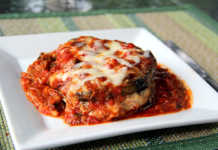While we’ve long accused diets rich in fats, sugar, and processed foods for our ongoing battle with the bulge, fructose is emerging as a bigger player than we thought. Sure, fructose naturally exists in fruits, but it’s also found in table sugar and often transformed into corn syrup, stealthily lurking in cereals and candies.
Researchers from the University of Colorado say the real issue here is the sheer volume of fructose we’re consuming, which seems to be turbo-charging the global obesity epidemic.
According to the World Health Organization (WHO), obesity rates have tripled since 1975, with a whopping 13% of adults now in the overweight category. Published in the journal Obesity, this study suggests that fructose is causing all the chaos.
You see, when you ingest it, fructose takes your body’s active energy, known as ATP, and tosses it out the window. The result? You get hungrier and end up eating more. Plus, this drop in ATP can also slam the brakes on your metabolism – that’s the engine that’s supposed to burn off all that delicious food you just devoured, but now it’s snoozing on the job.
Dr. Richard Johnson, the lead researcher, explains that fructose is like the mastermind behind our metabolic sluggishness, making us lose control of our appetite. But don’t rush to blame fructose entirely!
Fatty foods are still rocking the world of high-calorie mischief. So, if you want to stay ahead of the game, try to dial down your fructose intake and pile your plate with low-glycemic, fiber-rich champs like veggies, fruits, and legumes


![5 Reasons You Should Travel Alone Airplane [image source: chau nguyen/ http://thedevilhatessweatpants.blogspot.com.au ], crowd ink, crowdink, crowdink.com, crowdink.com.au](https://crowdink.com/wp-content/uploads/2016/08/Chau-airplane-218x150.jpg)





























